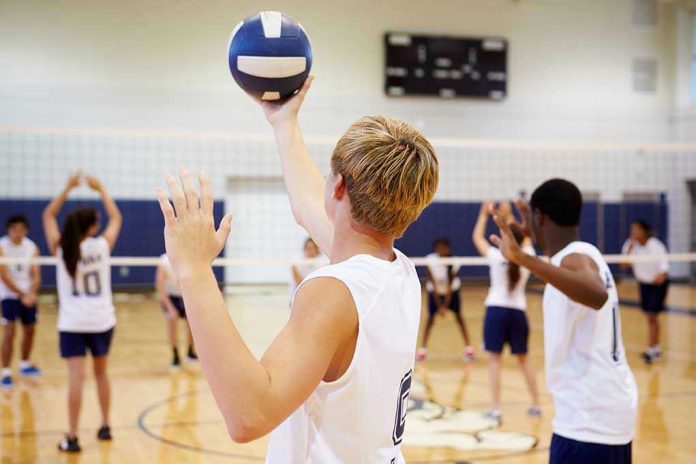
As the Trump administration enforces strict bans on transgender girls in girls’ sports, a heated national battle is redefining the boundaries of fairness, women’s rights, and federal power in American athletics.
Story Snapshot
- Trump administration mandates bans on transgender girls in girls’ sports, threatening federal funding for non-compliance.
- Over 20 states have enacted similar bans, with escalating legal, political, and social ramifications nationwide.
- The debate centers on fairness, alleged physical advantages, and the erosion of opportunities for cisgender female athletes.
- Ongoing court challenges, policy changes, and high-profile cases ensure the controversy remains unresolved.
Federal Crackdown: Trump Administration’s Executive Action
President Trump issued sweeping executive orders requiring all states and educational institutions to bar transgender girls—those assigned male at birth who identify as female—from participating in girls’ and women’s sports. The administration tied compliance to federal funding, sending a clear message to universities and states: uphold the new policy or face severe financial penalties. This aggressive stance reversed previous federal guidance and signaled a return to prioritizing biological sex in sports eligibility, reflecting the administration’s alignment with widespread conservative frustration over perceived government overreach and threats to women’s sports.
The University of Pennsylvania’s public apology in July 2025 to female athletes “disadvantaged” by Lia Thomas’ participation exemplified the intense pressure universities now face. Federal funding cuts forced the university to revise records and admit that previous policies may have undermined fairness for cisgender women. This move was lauded by supporters of the ban as a long-overdue correction and a victory for the integrity of women’s sports. Critics, however, argue that such actions marginalize transgender youth and escalate already polarizing debates, while legal challenges continue in multiple jurisdictions.
State Legislation and Policy Shifts
Since Idaho’s landmark HB 500 in 2020, more than 20 states have enacted laws restricting transgender girls from competing in girls’ sports. These state-level actions accelerated after Trump’s return to office, often mirroring federal guidance and leveraging the threat of funding loss. Sports governing bodies, including the NCAA and state athletic associations, have revised eligibility rules, balancing compliance with shifting legal landscapes and mounting political pressure. The California Interscholastic Federation, for example, recently piloted a new entry process after protests erupted over a transgender athlete’s participation, underscoring the rapid evolution of policies at every level.
Legal battles have erupted, with some bans blocked by courts and others swiftly enacted. The courts remain pivotal, as judges weigh Title IX’s original intent against evolving definitions of sex and gender. Many legal scholars note the unresolved scientific questions regarding residual athletic advantages after testosterone suppression, fueling continued litigation and uncertainty for athletes, parents, and institutions navigating the changing rules.
Impact on Female Athletes and Conservative Values
For many conservative Americans, the core of the issue is the erosion of hard-won opportunities for girls and women. Supporters of the bans argue that allowing biological males to compete in girls’ sports undermines the spirit of Title IX, jeopardizes scholarships, and could lead to safety concerns in contact sports. High-profile cases like Lia Thomas have become rallying points, galvanizing parents, athletes, and advocacy groups to defend single-sex competition as a matter of both fairness and common sense. The Trump administration’s decisive federal intervention is seen by many as restoring constitutional principles and protecting the integrity of women’s sports against what they view as radical social engineering.
Yes, Having a Boy on a Girl's Volleyball Team Is Unfair https://t.co/84trQSyi2A
— The Linger Family (@linger_the) August 25, 2025
Opponents of the bans, including some advocacy groups and LGBTQ+ organizations, argue that exclusionary policies harm transgender youth, increase stigma, and violate principles of inclusion. However, for a majority of conservative voters, the return to clear, biological definitions in sports is not only a victory for fairness but a rejection of the previous administration’s “woke” policies and an affirmation of family values and the rights of women and girls. The issue remains deeply divisive, with no clear resolution in sight as legal, scientific, and political battles continue to shape the future of American athletics.
Sources:
The History of Transgender Athletes in Sport
Trans Women in Sports: Facts Over Fear
Timeline of the trans athletes in sports debate | KMPH
Transgender athlete laws, state legislation, science – ESPN









